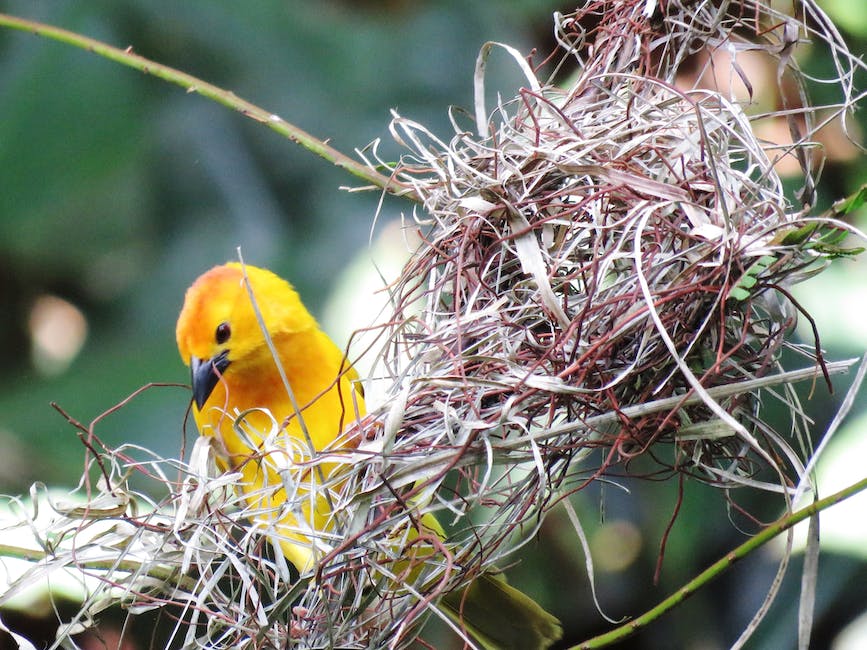Although yellow jackets are considered beneficial because they eat many nuisance insects, they can become a nuisance themselves when they build their nests near human dwellings. A single yellow jacket queen can establish a new colony each year, with the population peaking in late summer. The workers forage for food, mostly insects, which they bring back to the nest to feed the developing larvae. The adults also feed on nectar, fruit juices, and other sugary substances.
There are a few ways that you can find a yellow jacket nest in the ground. One way is to look for a small hole in the ground that is surrounded by a lot of activity. Another way is to listen for a buzzing sound coming from the ground. If you think you have found a nest, it is important to be very careful as yellow jackets can be very aggressive.
How do you get rid of yellow jackets if you don’t know where the nest is?
The smell of peppermint is a yellow jacket repellant. Combine a few drops of pure peppermint oil, a few tablespoons of dish soap and warm water in a spray bottle. Locate any active wasp nests and carefully spray the concoction around the entrance. This should help to repel the yellow jackets and keep them away from the area.
If you see small stones and dirt piling up around the opening of a burrow or hole, this is a sign of an underground yellow jacket nest. They will also use materials on the ground with available openings, such as railroad ties or concrete blocks.
How deep is a yellow jacket nest in the ground
Yellow jacket nests are most commonly found just below the surface, with the entrance hidden by a dense bush or thick grass. The nests themselves can be quite deep, up to 4 feet, and are made of paper. They are approximately the size of a soccer ball.
To destroy a ground nest, pour a 50/50 mixture of peppermint castile soap and water into the nest’s opening, following it immediately with boiling water After a few days of no wasp activity, dig the ground nest up and dispose of it.
What time of day are yellow jackets most active?
Bees are most active during the day and return to their nests at night. This means that the chances of being stung are reduced when it is dark.
Most people are familiar with the yellow jacket and the paper wasp, two of the most common types of wasps found in the United States. While both yellow jackets and paper wasps are capable of building nests, there are some key differences between the two.
For starters, yellow jackets typically build their nests under eaves, while paper wasps will build their nests in the ground. Additionally, the appearance of yellow jacket and paper wasp nests also differs. Paper wasp nests look like honeycombs with multiple openings, while yellow jacket nests have a single opening.
Despite these differences, both yellow jackets and paper wasps can be dangerous, particularly if their nests are disturbed. If you come across a wasp nest, it’s best to leave it alone and call an exterminator if necessary.
Do yellow jackets return to the same nest every year?
Wasps are a beneficial insect, helping to control many pests. However, their nests can become a nuisance, especially when located near homes or other buildings. It is important to learn how to identify a wasp nest so that you can take steps to avoid it or get rid of it if necessary.
If you find a yellow jacket or hornet nest on your property, there’s no need to worry about it coming back the following year. These insects do not reuse their nests; all that is left behind is harmless paper. Some people like to take preventive measures against yellow jackets and hornets by caulkings cracks, closing up holes, filling in holes in the yard, or removing old nests from last year. April is a perfect time to do this because there are no nests in milder climates at this time of year.
Should I destroy a yellow jacket nest
As the weather begins to cool down in the fall, yellow jackets become more aggressive and are more likely to sting. If you have a nest on your property, now is the time to treat or remove it.
The death of yellow jacket workers is a natural process that occurs when temperatures drop below 45 degrees Fahrenheit. The new queen, who will create next year’s colony, survives by burrowing deep into the ground where she hibernates until spring.
How many yellow jackets are in one nest?
If you frequently see yellow jackets, it is likely that their nest is nearby. Nests can have populations of 2,000 to 4,000 worker yellow jackets (all female), drones (male) yellow jackets, and up to 50 queens.
Nests are generally always under construction throughout the spring and summer as the colony continues to grow. So, technically, a fully realized nest takes about 4-6 months to complete.
Can you pour gasoline down a yellow jacket hole
If you’re dealing with a yellow jacket problem, it’s best to call a professional. Pouring gasoline or other chemicals into the nest is a fire and health hazard, and it will also poison the ground, killing both plants and animals.
Chickadees are small, sprightly birds that are very active and love to chase. They have been known to chase for 200-300 yards if they feel their nest is threatened. They are also very quick and agile, able to go around obstacles and hover over water for long periods of time.
Do yellow jackets dig their own hole?
It’s amazing that these insects can’t create their own entrance/exit to their nests and are instead reliant on existing mouse or vole holes. This means that if the hole is blocked for any reason, the insects will be trapped inside. This behavior is surprising given that most other burrowing insects are able to create their own entrance/exit.
We are excited to announce that Yellowjackets Season 2 will premiere on Showtime on March 24, 2023! This season promises to be even more thrilling and suspenseful than the first, so be sure to tune in!
Can you mow over a yellow jacket nest
If you’re allergic to bee stings, wasps can be problematic. I found this out the hard way last September when I stumbled upon a nest while mowing the lawn. Let me tell you, they were not happy about it. If the ground is too wet for them to build their nest, they’ll just build on top of the ground. So, watch out!
If you’re looking for a natural way to repel yellow jackets, peppermint oil is a great option. Yellow jackets are not fond of mint-based herbs like spearmint and peppermint, so apply peppermint oil around the perimeter of your home to keep them away.
Wrap Up
To find a yellow jacket nest in the ground, you can go out at night with a flashlight and look for the telltale hole in the ground. You can also try to locate the nest during the day by following the yellow jackets back to their home.
If you’re trying to remove a yellow jacket nest, it’s important to first locate it. These insects typically build their nests in the ground, so you’ll likely need to do some digging. Look for small holes in the ground, and be aware that the nest may be hidden beneath leaves or other debris. Once you’ve found the nest, you can take steps to get rid of it.

